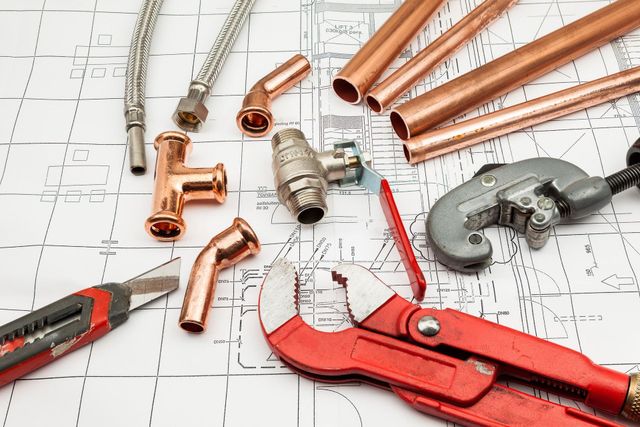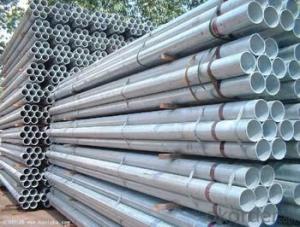Selecting the Right Sustainable Plumbing Materials: A Step-by-Step Guide
Selecting the Right Sustainable Plumbing Materials: A Step-by-Step Guide
Blog Article
How do you feel when it comes to Plumbing Tips Sustainably Saving the Environment?

Take into consideration the Material's Life-span
Choose pipes materials that use resilience and long life. Longer-lasting materials suggest fewer substitutes, reduced waste, and reduced lasting environmental effect. As an example, copper and stainless-steel are both very sturdy and 100% recyclable, which assists reduce waste.
Examine the Manufacturing Refine
Try to find products made through eco-friendly processes. This consists of products like actors iron or copper, which can be generated with a reasonably reduced ecological influence compared to plastics that require chemical-intensive production procedures.
Prioritize Water Efficiency
Choosing water-efficient components, such as low-flow bathrooms, taps, and showerheads, is critical. These fixtures decrease water use, which not just decreases your water bill yet also decreases the power consumed in water home heating and reduces the strain on sewage treatment facilities.
Choose Non-Toxic Materials
Prevent products that seep chemicals right into the water. Copper and PEX are generally non-toxic, however it is very important to make certain that any plastic components do not contain unsafe chemicals like BPA or phthalates, specifically for alcohol consumption water lines.
Consider the Energy Required for Water Home Heating
Select pipes formats and products that reduce the energy needed for heating water. Insulating your warm water pipelines and picking reliable system layouts can significantly decrease the energy used, hence lowering your home's total carbon impact.
Opt for In Your Area Sourced Products
Utilizing locally sourced materials can decrease the carbon emissions associated with transportation. Additionally, sustaining neighborhood services assists promote a sustainable local economy.
Evaluate End-of-Life Disposal
Take into consideration the recyclability and biodegradability of pipes materials. Metals like copper and steel are often recyclable, while some plastics and rubbers could not be, adding to land fill waste. Comprehending the lifecycle of the materials you pick can aid in making a much more sustainable choice.
Try to find Qualifications
Seek products with ecological accreditations. Accreditations like EPA's WaterSense, GREENGUARD, or Cradle to Cradle (C2C) indicate that items satisfy strict environmental criteria throughout their lifecycle.
Check for Recycled Content
Pick materials which contain recycled material. Numerous metal pipes products, like those made from copper and stainless-steel, typically consist of a considerable percentage of recycled materials. PVC and PEX can additionally include recycled plastics, though their overall ecological impact may be greater due to their production and disposal procedures.
Final thought
Picking green plumbing products includes taking into consideration the durability, recycled material, manufacturing procedure, water and power effectiveness, poisoning, sourcing, disposal, and certifications of the items. By making notified options, homeowners can considerably decrease their environmental influence while making certain the effectiveness and longevity of their pipes systems.
The Impact of Plumbing Materials on the Environment
When buying a home you may be interested in having a sustainable home, and one of the most important aspects that you should not overlook the plumbing systems. With water contamination getting more and more common lately, it’s important to understand how plumbing systems work and their impact on the environment. Drinking water is carried through these pipes everyday and when choosing plumbing materials we must consider ecological toxicity, air pollution, fossil fuel depletion, and global warming.
Low Cost
When buying a home you may be looking for the cheapest way to be sustainable. Although some environmentally-friendly products may be somewhat more expensive than their competitors, money will be saved in the form of reduced water usage and decreased energy consumption in the long run.
A Life Cycle Inventory of residential plumbing systems done in 2011 showed that CPVC systems demonstrate 5% less energy waste than PEX systems and 17% less than copper. This study also indicated that CPVC systems wanted 30% less water than copper and 15% less than a PEX system. These numbers are likely due to the differences in thermal conductivity between these materials.
Copper has a thermal conductivity that is hundreds of times higher than plastics. PEX materials are the least thermal conductive of the three tested and this is why it is better in conserving water and energy.
Sustainability
While environmental performance is important, people can still be concerned about the sustainability of their home. The use of proper plumbing materials when building a home can greatly affect the future sustainability of the home, which can also affect future costs and bills.
A relatively new factor in plumbing, eco-friendly pipe materials can reduce both energy costs, and the overall environmental footprint of your home. These materials are not as widely available due to their recent introduction to the industry, but an understanding of the benefits of each can help save both money and the environment later down the line.
Environment-Friendly Materials
The two most common types of piping material in use today are metals like iron and copper, and PVC piping. Of the two, metal piping is more environmentally friendly and sustainable, but not without drawbacks.
PVC piping however, is notorious for low sustainability, contaminating water with chemicals, and increased waste or “greywater”. While PVC is recyclable, the process is expensive and not in high demand due to the cheap price of fresh PVC.
Metal piping however, has a longer lifespan with less chance of deterioration and no harmful chemical waste that could contaminate your water and potentially harm you or your family. Metal piping is susceptible to corrosion however, usually after a long fifty year lifespan.
The best alternative to these two pipings is relatively new eco-friendly plastics like the ones mentioned earlier. Polyethylene and polypropylene are the two main ingredients in these pipes which are recognized by Greenpeace, an environmental organization, to be the only “future-friendly” piping material on the market.
The more natural and longer lasting materials prevent long term contamination with eco-friendly materials that last long enough to rival the longevity of metal piping. Even local Atlanta plumbers and plumbing installers should have access to the materials you need to make your house eco-safe.
https://www.ecomena.org/impact-of-plumbing-materials-on-environment/

I stumbled upon that review about What are some eco-friendly plumbing solutions? when browsing the search engines. Sharing is caring. Helping people is fun. I enjoy reading our article about Plumbing Tips Sustainably Saving the Environment.
Schedule Appointment Report this page